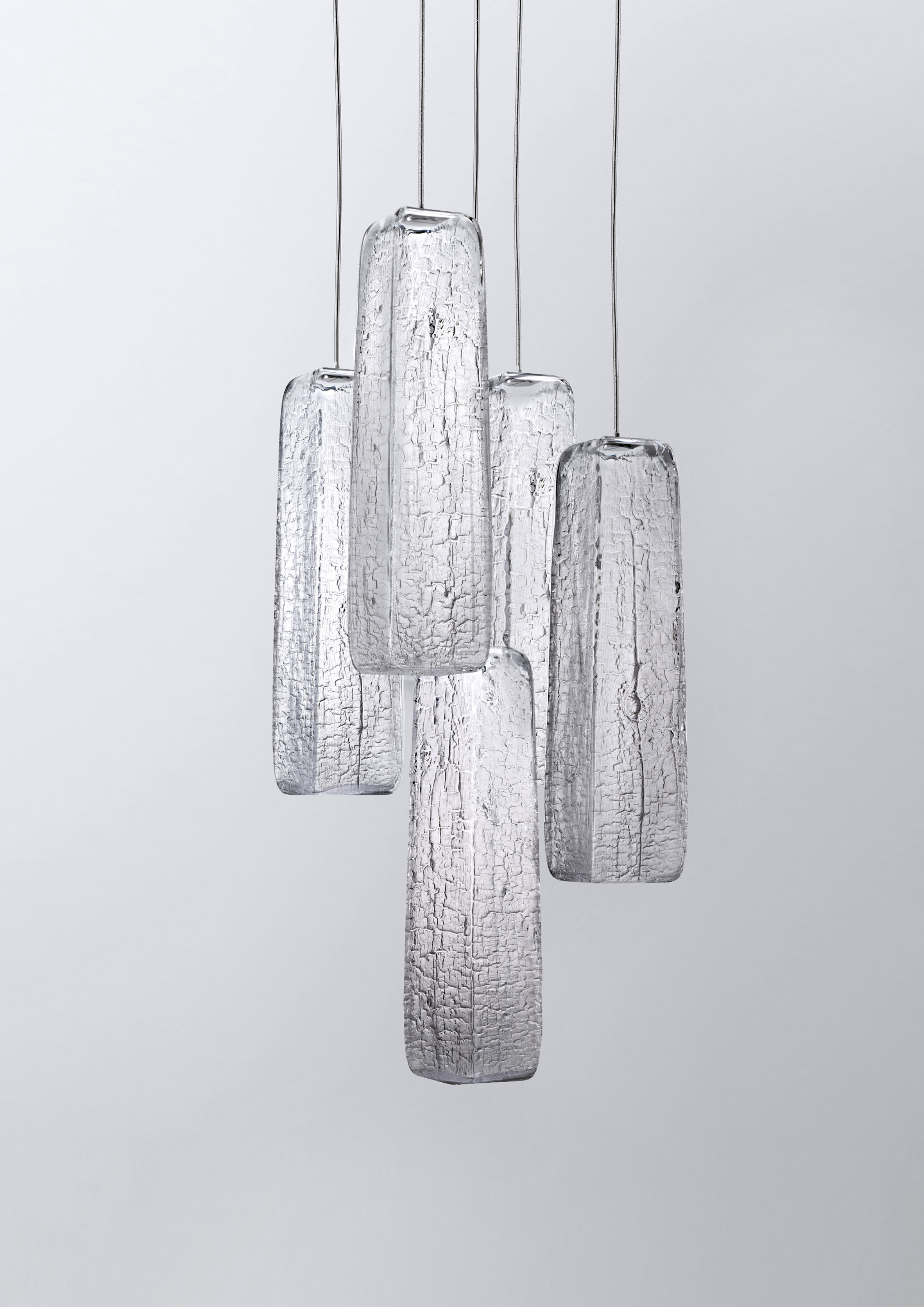Kengo Kuma burns woods to create crackled glass lighting for Lasvit

The patterns on this glass lighting by Kengo Kuma & Associates was created by burning wooden moulds, as in the ancient Japanese technique of charring timber.
The Japanese architecture firm, led by Kengo Kuma, unveiled the Yakisugi collection for Czech glass brand Lasvit at this year's Milan design week.
To make the long and thin glass pendant lights, the architects blew molten liquid glass inside dry wooden moulds. The heat of the inflated glass burned the wood, which in turn left the crackled imprints on the glass.
The process reminded the architects of the Japanese technique of shou sugi ban or yakisugi, where wood is charred to preserve it and prolong its life.
"Because of the dry properties of the wood and very high temperatures of liquid glass, the inner side of the mould was on fire," Kengo Kuma & Associates chief manager Marcin Sapeta told Dezeen. "There was this magic moment where you are able to capture this living texture of the wood inside the glass."
As the moulds can only be burned and used once, each of the lights features different textures, with varying imprints and depths of lines.
Groups of the lights hung together emphasise these subtle differences.
"Each of the moulds is only for one unique lighting feature because of the fact that all the texture is burnt, so you cannot reuse it," said Sapeta. "So each of the lighting features has its own identity and living story behind it."
By pairi...
| -------------------------------- |
| AY Architects adds timber science laboratory to London school |
|
|
Villa M by Pierattelli Architetture Modernizes 1950s Florence Estate
31-10-2024 07:22 - (
Architecture )
Kent Avenue Penthouse Merges Industrial and Minimalist Styles
31-10-2024 07:22 - (
Architecture )






